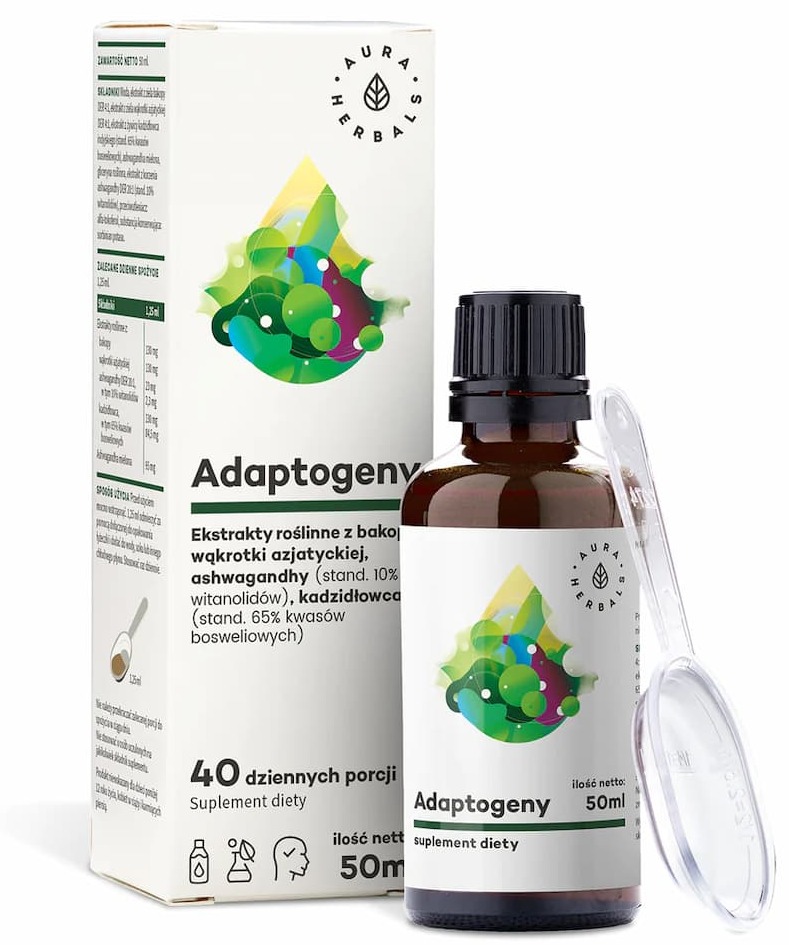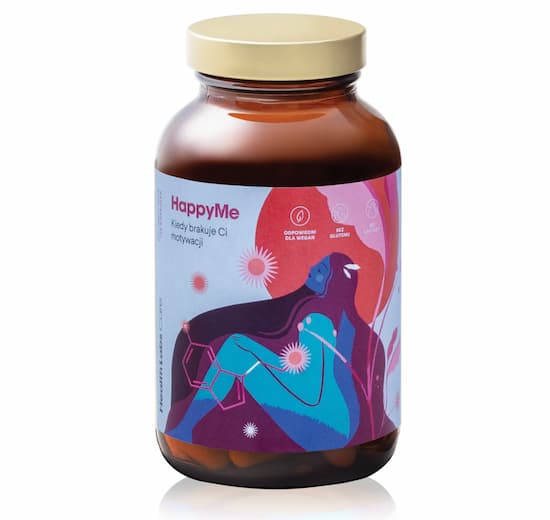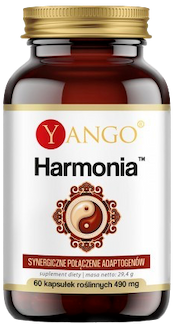Chinese mace mushroom: properties, how it works + doctors' opinions
Mace (cordyceps) is a fungus with interesting properties. Check out what scientific research suggests.


Learn more about our editorial process
.

Learn more about our editorial process
.

Learn more about our editorial process
.

Learn more about our editorial process
.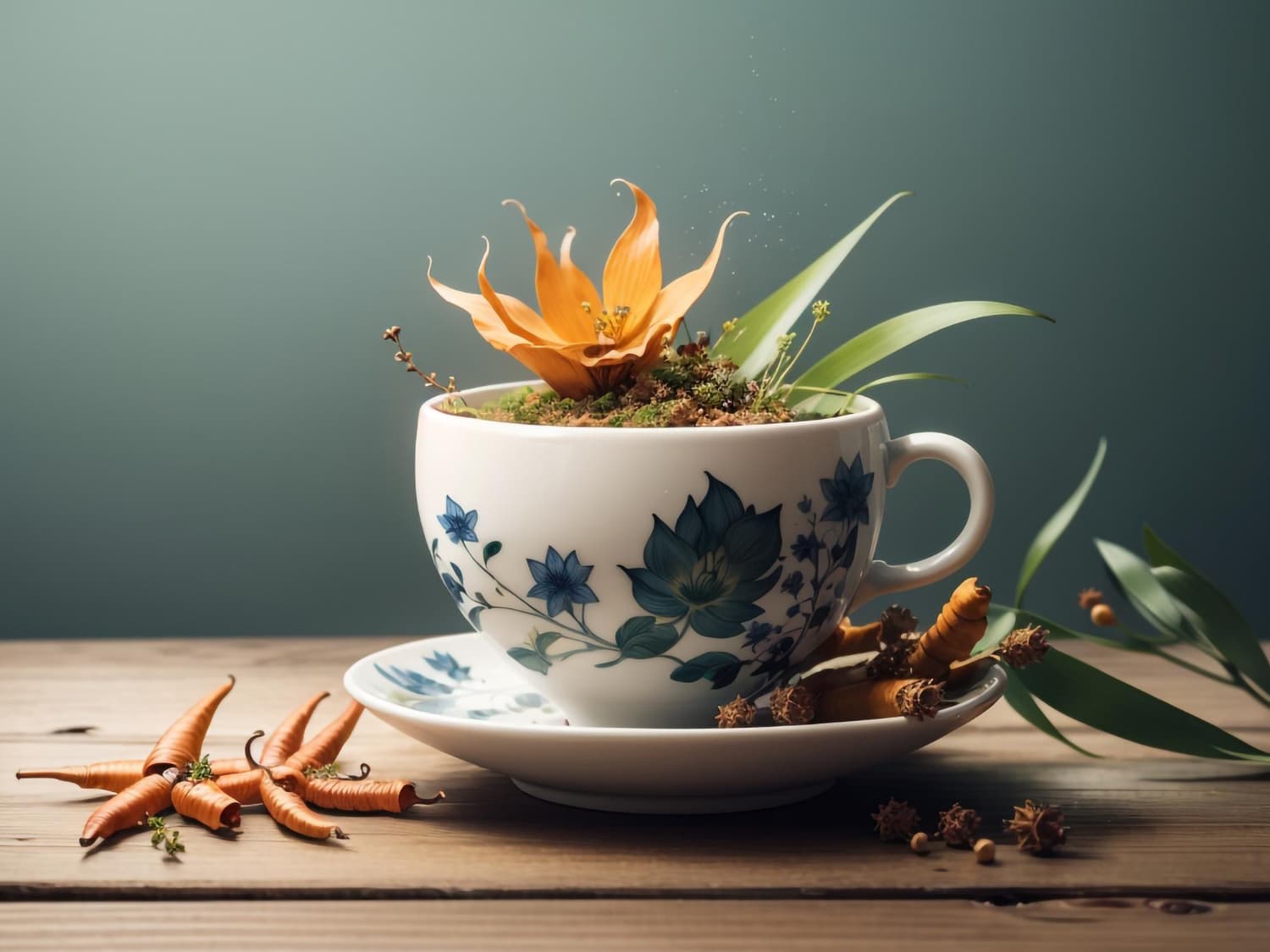
Why you can trust us
Articles on Natu.Care are written based on scientific research, data from government websites and other reliable sources. The texts are written in cooperation with doctors, nutritionists and other health and beauty experts. Articles are reviewed before publication and during significant updates.
.Learn more about our editorial process
.Information about advertisements
Content on Natu.Care may contain links to products from the sale of which we may receive a commission. When creating content, we adhere to high editorial standards and take care to be objective about the products discussed. The presence of affiliate links is not dictated by our partners, and we select the products we review ourselves completely independently.
.Learn more about our terms and Conditions
.The cordyceps, or popular cordyceps, is an interesting fungus with murderous properties - fortunately only for insects. It has played its part in games and TV series, and has its own circle of admirers.
Yes - people consume this mushroom, which in its previous incarnation (before it became a capsule or functional coffee) turned insects into zombies. Together with a clinical nutritionist, we take it under the magnifying glass to see what the scientific research suggests and whether it is safe to use.
From this article you will learn:
- What properties Chinese mace (cordyceps) has.
- What it does.
- What scientific research says about its effects.
- How to use it.
- How to use it to feel the effects. .
- What are the contraindications and side effects. .
- What are the opinions of doctors about this mushroom. .
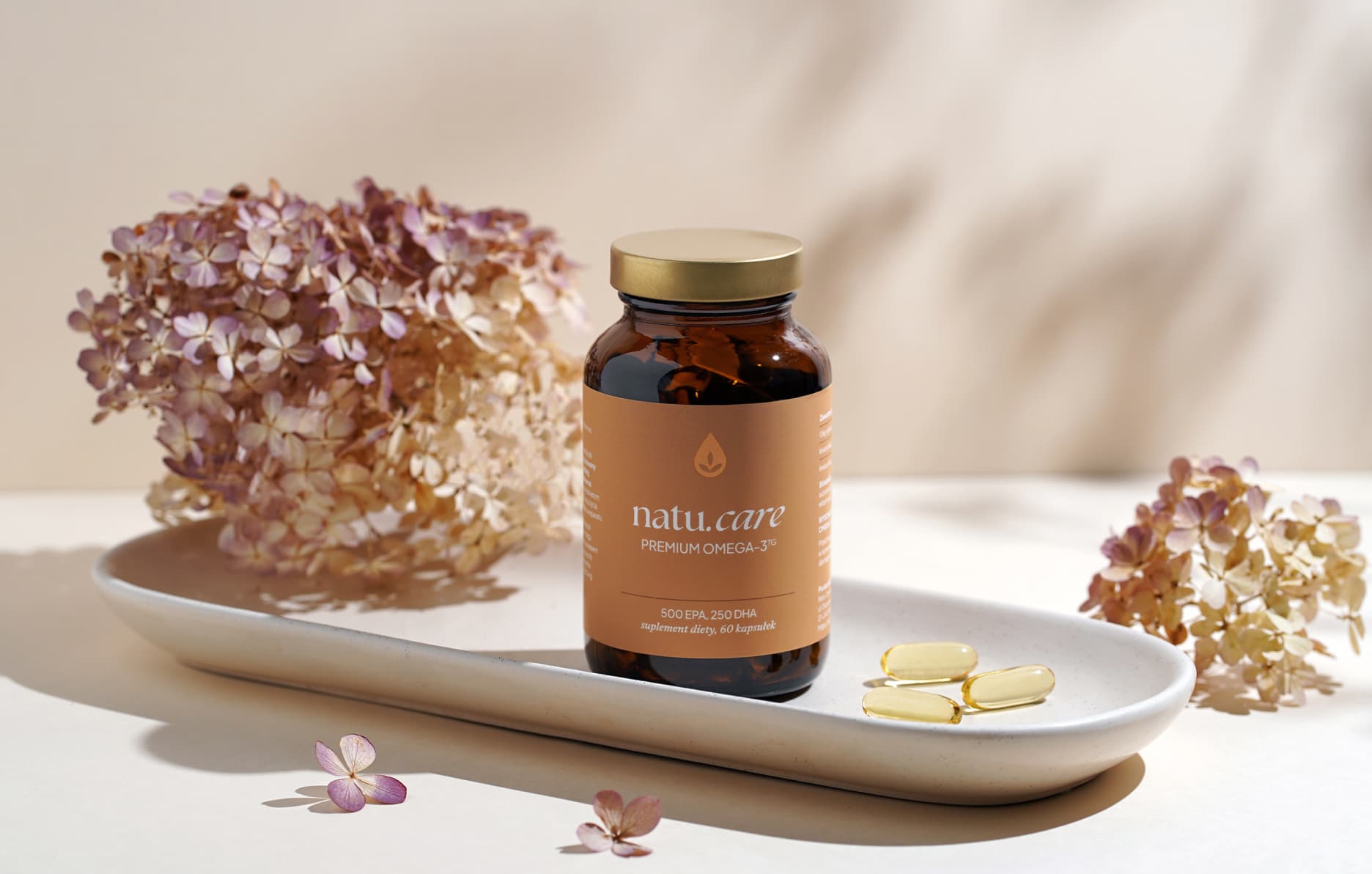
Sprawdź, za co pokochały go tysiące klientek Natu.Care Premium Omega-3ᵀᴳ -15% z kodem BLOG15
Natu.Care Omega-3ᵀᴳ Premium
Natu.Care Omega-3ᵀᴳ Premium dla zdrowia serca, mózgu i odporności. Najlepsza przyswajalność. Optymalna dawka 750 mg. Przebadana przez niezależne laboratorium.
Zobacz więcej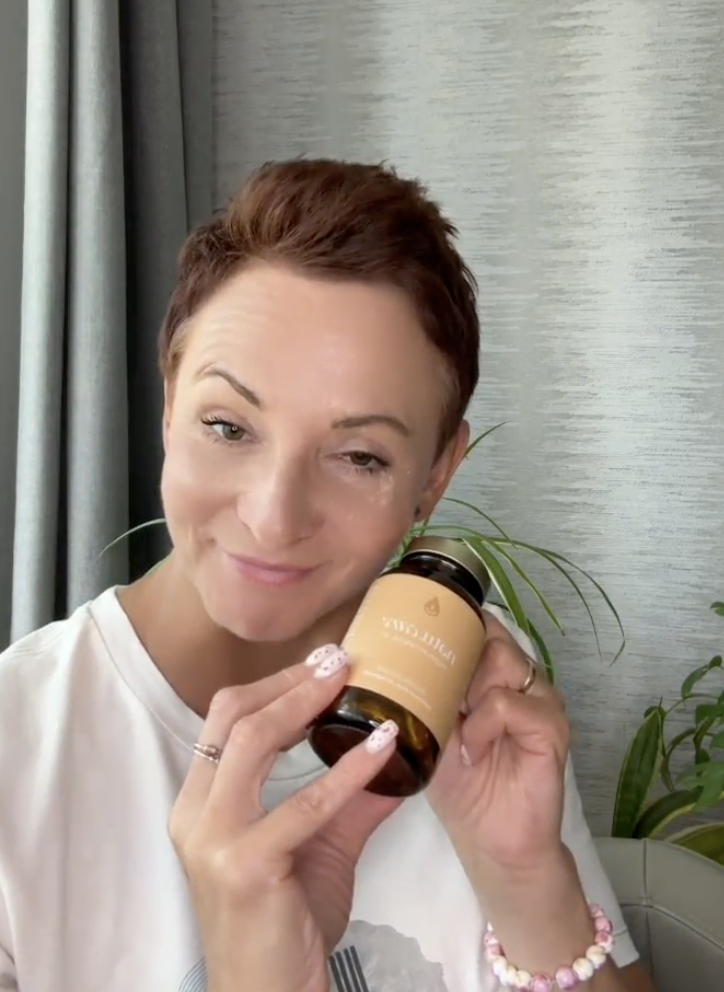
Produkt ma super skład, transparentną etykietę i co dla mnie jest ważne – małe kapsułki do połknięcia. Nie ma też nieprzyjemnego efektu odbijania rybą, który miałam spożywając inne produkty. Widzę znaczną poprawę odporności. Polecam!@Kasia P.
See also:
Patchworm - what is this fungus?
.
The tentacle is a genus of parasitic fungi in the tentacle familyand. More than 680 species have been identified to date, and the most popular and best studied of these are cordyceps militaris (combat tentacle) and cordyceps sinensis (Chinese tentacle). Most of the mushrooms are native to Asia, with most found in the high mountainous areas of Nepal and Tibetand.
This parasitic fungus invades the insect's body, attacks its nervous system, controls its prey's behaviour and feeds on it. In the final stage, the fungus grows on the outer surface of the 'possessed' insect. The victim dies and the fungus escapes from its body to spread its spores to other insectsand.
Zombie ants
.Zombie-infected ants behave like ... zombies . They suffer from convulsions, their movement consists of random, undirected movements, and they have atrophied jaw muscles. This is a complex example of behavioural manipulation requiring coordinated changes in host behaviour and morphology, of which the tentacle is capable.
You already know why the zombie tentacle became the inspiration for the developers of the game The Last of Us. If it is such an uninvited guest, why do people voluntarily ingest it ?
You may be wondering...
.
Can the tentacle infect humans?
.
Luckily, the tentacle cannot attack humans. It won't infect him and it certainly won't grow on his skin. A clinical nutritionist explains:
Every parasite that exists in nature attacks a specific host to which it is evolutionarily adapted. The tentacle is not pathogenic to humans and will not cause infection or disease..
 .
.
Aleksandra Cudna-Bartnicka Clinical nutritionist
Macrophage "specialises" in parasitizing specific species of insect larvae - feel safe.
Name of the fungus
.The Latin name of the tentacle fungus - cordyceps comes from the ancient Greek word κορδύλη kordýlē, meaning 'tentacle', and the Latin suffix -ceps, meaning 'with a head'. The name refers to the shape of the mushroom that grows from the body of the victimand
How does the tentacle work?
.
The bioactive constituents in matzoh are responsible for the beneficial effects of matzoh :
- cordycepin, .
- polysaccharides, .
- ergosterol, .
- mannitol, .
- adenosine, .
Cordycepin shows nutraceutical and therapeutic potential, and can have antioxidant, anti-inflammatory, anti-aging, antidiabetic or antihyperlipidaemic effects, among others, making matzo mushroom the most valuable fungus to help maintain health.
 .
.
Aleksandra Cudna-Bartnicka Clinical nutritionist
.
Maccharide also contains many important nutrients, including various types of essential amino acids, B vitamins - B1 (thiamine), B2 (riboflavin), B12, vitamin K, various carbohydrates of functional importance, proteins, nucleosides, sterols and other trace elementsand.
.
Maceberry - properties
.
For centuries this mushroom has been used in Eastern medicine to treat certain ailments, add vigour and even improve libidoand. The following properties of mace mainly refer to results of animal or in vitro studies (i.e. studies under laboratory conditions outside of a living organism, such as in a test tube)and.
Potentially:
.
Anti-aging benefits
.
Scientists explain that it is the content of antioxidants in matcha that may explain its anti-aging potential.
Antioxidants are chemical compounds that protect the body's cells from the damaging effects of free radicals. Free radicals are perishable molecules that, in excess, promote disease and accelerate the ageing process..
 .
.
Aleksandra Cudna-Bartnicka Clinical nutritionist
.
Many animals have benefited in scientific studies from the anti-ageing properties of matcha. This fungus increased antioxidant levels in ageing mice, improved memory and learning ability - the rodents performed better in maze testsand.
In another study, administration of the fungus extended the lives of mice and fruit flies, compared to test animals that took a placebo .
Improves memory and concentration
.
Maccharide can support learning ability and improve memory. It has the potential to alleviate short-term memory impairment caused by brain ischaemiaand. The mushroom contains nucleosides, cordyceps acid and other bioactive substances that may have potential benefits for cognitive function.
In a 2018 study, mice given this mushroom improved memory and learning ability. This was tested, among other things, in a maze test. In addition, the mice had increased levels of the neurotransmitters GABA and glutamine in brain tissueand.
Maccharide is a popular additive in so-called functional coffees and even hot chocolates, which are thought to improve memory and focus.
Reduces inflammation
.
When human cells are exposed to matcha, proteins that increase inflammation in the body are suppressed, reversing the inflammatory processand.
In a 2008 study involving asthmatic mice, the fungus reduced inflammation in their airways. However, researchers stress that cordyceps is less effective than commonly prescribed substances used to relieve inflammation in the bodyand.
The potential anti-inflammatory properties of mace have not yet been confirmed in humans.
Further studies are needed to confirm efficacy, determine the optimal therapeutic dose and duration of use. If you are treating inflammation in the body - don't abandon conventional treatment..
 .
.
Witold Tomaszewskidoctor of medical sciences
.Reduces fatigue and stress
.
Maccharide is used in Chinese medicine as a functional food for its tension, stress and fatigue reducing effectsand.
Some manufacturers of matcha preparations boldly write about mood enhancement and even antidepressant potential. Unfortunately, human studies are lacking in this area.
Partially positive results have been observed in rodents suffering from depression, according to scientific studies. However, these results have not been confirmed on the human population, so we have no argument for the use of this form of therapy for depression.
 .
.
Marcin Zarzycki physician
.
Improves libido and fertility
.
Many adaptogens are attributed with sexual enhancement properties and are called natural aphrodisiacs.
In Chinese medicine, mace is used to improve libido and fertilityand. Scientific studies have shown that passionflower (of the genus militaris) has a positive effect on testosterone production and improves sexual health in ratsand.
Castrated rats administered mace improved sexual function: appearance erections, prolonged erection time and ejaculationand.
.
In another study, administration of this fungus to rats showed a 33% increase in sperm count, a 29% decrease in sperm malformations and a 79% increase in sperm survival rate .
.
Improves sports performance
.
Muscle enhances the production of the adenosine triphosphate (ATP) molecule, which is essential for providing energy to musclesand. This can improve the efficiency with which the body uses oxygen, especially during intense physical activity .
There are two interesting studies (from a decade ago) involving seniors that suggest a positive effect of this fungus on physical activity.
- In one of these studies, researchers tested the effects of the mace on exercise capacity in 30 healthy older people using a stationary bicycle. Participants received either a synthetic strain of passionflower three times a day or a placebo for six weeks. At the end of the study, the aerobic ceiling increased by 7% in the seniors who took passionflower, while the subjects taking the placebo showed no change in this parameterand.
- .
- In a similar study, 20 healthy seniors were given 1 gram of matcha or placebo for 12 weeks . The subjects' exercise performance improved, which contributed to a better sense of well-beingand.
Interestingly, research to date suggests that matcha is not effective in improving exercise performance in trained athletes. If you want to support performance during training, check out ashwagadha or other adaptogens.
Preventing type II diabetes
.
Results from studies on diabetic mice have shown that matcha can maintain normal blood sugar levels by mimicking the action of insulinand.
This mushroom may play an important role in the treatment of diabetic kidney disease by affecting various mechanisms involved in inflammation, cell death, oxidative stress and insulin resistance .
Positive effects on the kidneys
.
A review of 2014 studies involving 22 papers with 1,746 participants found that patients with chronic kidney disease taking matcha preparations experienced improvements in kidney functionand.
.
It should be noted, however, that the results are not conclusive - the review authors concluded that many of the studies were of low quality.
Regulates cholesterol
.
In a 2011 study, rats and hamsters were fed a high-fat diet and simultaneously given cordycepin (the active compound of matcha) for four weeks. The rodents had a reduction in total cholesterol, triglycerides and LDL 'bad cholesterol'and. In another study fattening Syrian hamsters, their lipid profile was also significantly improved .
The modern diet promotes high cholesterol. This can lead to the development of cardiovascular diseases such as atherosclerosis, hypertension and heart attack..
 .
.
Aleksandra Cudna-Bartnicka Clinical nutritionist
.
Promotes heart function
.
In a 2014 study, rats were given tentacles (of the genus sinensis) for eight weeks. The study showed that it significantly reduced heart and liver damage in rodentsand.
Scientists have attributed these effects to the adenosine present in this mushroom. It is a naturally occurring compound that protects the heart and prevents arrhythmia .
Some scientific studies have shown that matcha can increase blood flow in the heart and brain, improve microcirculation and stabilise blood pressure..
 .
.
Aleksandra Cudna-Bartnicka Clinical nutritionist
.
Facilitates weight loss
.
One 2010 study fed rats a high-fat diet and simultaneously administered cordycepin from mace. The results showed that consumption of this fungus may promote weight loss due to cordycepin's modification of the gut microflora, which may be one mechanism for obesity reductionand.
See also:
.
Shows anti-cancer potential
.
In vitro and animal studies suggest anti-cancer potential of the fungi cordyceps sinensis and militaris.
- In a 2015 in vitro study, maquis inhibited the growth of multiple types of cancer cells in the lung, colon, skin and liverand. .
- In a study in mice, mace stopped the growth of lymphoma, melanoma and lung cancer .
- One study tested the effect of maize (sinensis) on mice with leukopenia after radiotherapy and treatment with Taxol (a chemotherapeutic drug). The fungus reversed the leukopenia, suggesting that it may reverse the side effects of cancer therapy.
Leukopenia is a condition in which the number of white blood cells - leukocytes - decreases, lowering the body's defences and increasing the risk of infection.
.
 .
.
Witold Tomaszewskidoctor of medical sciences
..
.
However, it is important to note that these studies were conducted on animals and in vitro, so the effect of maquis on tumour suppression or leukopenia in humans is unknown.
Grease yourself with the fungus
.Fungus can have topical applications. One scientific study showed that this fungus applied topically in mice reduces skin inflammationand.
Does the tentacle stimulate?
.
Mace mushrooms do not stimulate because they are not stimulants and do not have properties such as, for example, caffeine or taurine. Some scientific studies indicate that matcha may reduce fatigue, which can translate into feeling more energised to perform.
Aura Herbals Adaptogens liquid
Product description
An adaptogenócomplex to support the body's resistance to stress, support concentration and memory processes, influence physical and mental performance and help maintain emotional stability. Convenient form of administration – ideal if you do not like swallowing tablets. The product is recommended for people who are very active, overtired and live under stress.
Pros and cons
An adaptogenócomplex to support the body's resistance to stress, support concentration and memory processes, influence physical and mental performance and help maintain emotional stability. Convenient form of administration – ideal if you do not like swallowing tablets. The product is recommended for people who are very active, overtired and live under stress.
Additional information
An adaptogenócomplex to support the body's resistance to stress, support concentration and memory processes, influence physical and mental performance and help maintain emotional stability. Convenient form of administration – ideal if you do not like swallowing tablets. The product is recommended for people who are very active, overtired and live under stress.
An adaptogenócomplex to support the body's resistance to stress, support concentration and memory processes, influence physical and mental performance and help maintain emotional stability. Convenient form of administration – ideal if you do not like swallowing tablets. The product is recommended for people who are very active, overtired and live under stress.
Health Labs Care HappyMe
YANGO, Harmony, adaptogens, capsules
Product description
This dietary supplement contains a synergistic combination of 5 plant extracts that positively influence the body's homeostasis and well-being. The product is recommended for people living under stress, tension and those who are physically active.
Pros and cons
This dietary supplement contains a synergistic combination of 5 plant extracts that positively influence the body's homeostasis and well-being. The product is recommended for people living under stress, tension and those who are physically active.
Additional information
This dietary supplement contains a synergistic combination of 5 plant extracts that positively influence the body's homeostasis and well-being. The product is recommended for people living under stress, tension and those who are physically active.
Solve Labs Brain Tech Memory & Focus, adaptogens, capsules

- Composition: bacopa monieri, gotu kola, rhoiola rosea, ginseng, zinc gluconate, choline, vitamin B6
- Form: capsules .
- Packaging: 30 or 60 capsules .
- Dose: 2 capsules daily .
- Sufficient for: 10 or 20 days .
Product description
Adaptogens, vitamins and minerals to support the mózg and nervous system. Brain Tech has been developed for people needing long-lasting concentration, improved learning ability, memory and increased resistance to stress.
Pros and cons
Adaptogens, vitamins and minerals to support the mózg and nervous system. Brain Tech has been developed for people needing long-lasting concentration, improved learning ability, memory and increased resistance to stress.
Additional information
Adaptogens, vitamins and minerals to support the mózg and nervous system. Brain Tech has been developed for people needing long-lasting concentration, improved learning ability, memory and increased resistance to stress.
Adaptogens, vitamins and minerals to support the mózg and nervous system. Brain Tech has been developed for people needing long-lasting concentration, improved learning ability, memory and increased resistance to stress.
Maceberry - how to use?
.
In order for the mushroom to have a chance to work, you need to know how much and how long to use it.
Dosage
.
In scientific studies, mace proved effective in doses 1000-3000 mg per dayand. This amount caused no side effects and was well tolerated by the subjects. However, follow the manufacturer's recommendations on the packaging. Due to limited research with humans, there are no clear dosage guidelines for matcha.
How long to use?
.
In scientific studies, passionflower has been administered to humans or animals from 2 to 3 weeks and this has not been associated with side effects. The effect of long-term intake of matcha on humans is unknownand.
Some sources state that it is necessary to take a break of about a week from consuming matcha after 6-8 weeks of use. This is because cordyceps mushrooms activate immune cells, so it is important to give the body time to rebalance after a cycle of use.
It is important to give the body time to rebalance after a cycle of use.
If you are not feeling the effects after a few weeks, perhaps try other adaptogenic plants?
See also:
.
What time of day to take it?
.
It doesn't matter what time of day you take the mace, as this mushroom does not have an immediate effect. Taken in the morning or before a workout, it will not stimulate (because it is not a stimulant), and consumed before bedtime, it will not have a sleep-inducing effect (it has no sleeping or calming properties). Adjust its consumption to your preferences.
.
Some phytotherapy (herbal medicine) experts indicate that it is a good idea to consume matcha on an empty stomach, so that the natural digestive enzymes can more easily process and absorb it into the body.
When will I feel the effects?
You can feel the effects of matcha even after a week of regular consumption, but it depends on the purpose of use. For example, lowering blood cholesterol will not happen in a few days (and it won't happen at all if you don't change your diet), so blood test take it after 4-6 weeks of use.
But if you have a session, stress or the end of a quarter of work ahead of you, within just a few days you can feel the knowledge self enter your head or tick off more tasks and not feel the need to drink coffee.
Which matcha to choose?
.
Choose matcha preparations that have:
- standardised for polysaccharide content (10-40%), .
- standardisation for cordic acid (the more the better, usually 7%), .
- DER ( Drug Extract Ratio) - determines how much of the raw material was extracted.
The mushroom available in dietary supplements or functional coffees is not the same mushroom as the one from Tibetan monks extracted from regions of its natural occurrence. In the preparations available on the market, you will find a synthetic form of matcha, grown in laboratories.
Tip: Coneflower and coneflower are a popular combination with synergistic effects. Preparations with these two adaptogenic mushrooms are worth trying.
Valuable piperine
It's nice if the product formulation also includes piperine. It enhances the uptake of mace, other active ingredients and adds valuable properties to the formula on its own.
Contraindications
.
Contraindications to the use of matcha areand:
.
- .
- pregnancy, .
- lactation, .
- age under 18 years old,
- lactation, .
- autoimmune diseases, .
- sensitivity to any component of the preparation, .
- planned surgery, .
Consult your doctor to be 100% sure of the safety of this adaptogen.
If you are using mace, consult your doctor before any planned surgery. This fungus should be discontinued 2 weeks before surgery as there are indications that it may affect the risk of bleeding during surgery..
 .
.
Witold Tomaszewskidoctor of medical sciences
.Side effects
.
Macrimony may cause side effects in some such asand:
- diarrhoea, .
- constipation, .
- discomfort in the stomach, .
Unpleasant symptoms usually pass after discontinuation of the fungicide.
.
Important
Fungus can affect the increased leaching of calcium from the bodyand, so take care of its supply in your diet.
Maccharide - expert opinions
.
Preliminary studies do indeed show considerable potential for matcha, but the study groups were not numerous and there is no information about a designed or ongoing clinical trial with this fungus. It is not out of the question that products containing tentacle could become valuable medicines. For the moment, its consumption is a kind of medical experiment..
 .
.
Witold Tomaszewskidoctor of medical sciences
.Macrimony is considered pharmacologically safe for human consumption. It shows potential to support the body, but we still have to wait for fireworks. If you want to try it out - follow the manufacturer's recommendations and give it a few weeks of time to spring up in the body.
 .
.
Ilona Krzak Master of Pharmacy
Cordyceps mushrooms have medicinal potential, but at this point we only know a small percentage of their properties and actual effects. It's worth a try, keep an open mind, but don't set yourself up for some big WOW..
 .
.
Julia SkrajdaDietitian
.There is a lack of evidence on the full safety of maca in humans. Single human studies are still too few to determine dosage, safety and optimal duration of use. And while numerous properties of cordycep have been confirmed by animal studies, we are still waiting for the results of human studies..
 .
.
Aleksandra Cudna-Bartnicka Clinical nutritionist
.
Why the growing popularity of mushrooms?
.
Clinical dietitian explains:
.
In this day and age we have to deal with many types of stressors - mental tension, overstimulation, insufficient sleep, inflammation, environmental pollution or poor diet. We are looking for natural ways to regain balance..
 .
.
Aleksandra Cudna-Bartnicka Clinical nutritionist
.
"Already in ancient Chinese medicine, it was recognised that mushrooms were excellent at supporting the body on its journey towards balance. Nowadays, the scientific world is starting to appreciate more and more the adaptogenic properties of plants. Thus, we can improve our quality of life and increase our resistance to stress without resorting to pharmacology. However, everything in moderation", addresses the nutritionist.
Summary
.
- Cordyceps (cordyceps) is a type of parasitic fungus that attacks selected insect species.
- There are more than 680 species of mace and they grow mainly in the high altitude areas of Nepal and Tibet.
- Maceaus.
- The most popular and best studied are cordyceps sinensis (Chinese passionflower) and cordyceps militaris (battle passionflower).
- Beneficial properties from the ingestion of passionflower have been studied mainly in in vitro and animal tests.
- Maccharide has shown potential in these studies to support kidney function, heart function, sugar and insulin metabolism, and to support memory, concentration, libido and sports performance.
- There are no high-quality studies that support the health-promoting benefits of passionflower for humans. .
- Do not use passionflower if you are pregnant or lactating, under 18 years of age, scheduled for surgery, undergoing chronic treatment for autoimmune diseases, or on immunosuppressive and anticoagulant medications.
FAQ
.What is Ophiocordyceps sinensis?
.Ophiocordyceps sinensis known in Poland as Chinese mothworm or Chinese cordyceps, is one type of parasitic fungus. It parasitizes the moth larva, causing its death and mummification. In Tibet, it is known by the names yartsa gunbu or yatsa gunbu. Internationally, it is also referred to as 'Himalayan Viagra'.
In traditional Asian medicine, it is recognised as an ingredient that aids recovery, enhances vital forces, benefits potency and is a natural aphrodisiac.
Is passionflower edible?
.Maceberry (cordyceps) is edible, but it must be properly prepared in advance. However, it is safest to use standardised extracts with passionflower (e.g. in dietary supplements, functional coffees, chocolates with adaptogens to drink). Never consume mushrooms of unknown origin or that you cannot identify.
.Does the mace occur in Poland?
.Yes, the mace occurs in Poland and 3 types can be found: cordyceps bifusispora, cordyceps militaris (combat mace) and cordyceps tuberculata (nodular mace). It is rare and difficult to spot because of its small size, e.g. the militaris tentacle grows up to 5 cm high and up to 1 cm thick.
Where does the cocklebur grow?
.The mace grows mainly in the Tibetan Highlands in the highest mountain areas of Nepal and Tibet. It is a relatively rare mushroom and is difficult to collect. This makes it expensive - its price for 1 kg is as high as £20,000.
What does mace work for?
.According to in vitro and human and animal research, it appears that matcha may have positive effects on reducing inflammation, lowering cholesterol, reducing stress and tension It also exhibits antioxidant potential.
Is it possible to grow mace?
Yes, it is possible to grow mahogany, but it is difficult and expensive. This fungus needs special conditions to thrive. The mycelium grows vigorously in the dark at 12-23°C. It usually takes about 21 days to develop for most strains.
.
Sources
.See all
.Ahn, Y. J., Park, S. J., Lee, S. G., Shin, S. C., & Choi, D. H. (2000). Cordycepin: Selective growth inhibitor derived from liquid culture of Cordyceps militaris against Clostridium spp. Journal of Agricultural and Food Chemistry, 48(7), 2744-2748. https://doi.org/10.1021/jf990862n
An, Y., Li, Y., Wang, X., Chen, Z., Xu, H., Wu, L., Li, S., Wang, C., Luan, W., Wang, X., Liu, M., Tang, X., & Yu, L. (2018). Cordycepin reduces weight through regulating gut microbiota in high-fat diet-induced obese rats. Lipids in Health and Disease, 17(1), 276. https://doi.org/10.1186/s12944-018-0910-6
Chen, B., Sun, Y., Luo, F., & Wang, C. (2020). Bioactive Metabolites and Potential Mycotoxins Produced by Cordyceps Fungi: A Review of Safety. Toxins, 12(6), Article 6. https://doi.org/10.3390/toxins12060410
Chen, S., Li, Z., Krochmal, R., Abrazado, M., Kim, W., & Cooper, C. B. (2010a). Effect of Cs-4® (Cordyceps sinensis) on Exercise Performance in Healthy Older Subjects: A Double-Blind, Placebo-Controlled Trial. Journal of Alternative and Complementary Medicine, 16(5), 585-590. https://doi.org/10.1089/acm.2009.0226
Chen, S., Li, Z., Krochmal, R., Abrazado, M., Kim, W., & Cooper, C. B. (2010b). Effect of Cs-4® (Cordyceps sinensis) on Exercise Performance in Healthy Older Subjects: A Double-Blind, Placebo-Controlled Trial. Journal of Alternative and Complementary Medicine, 16(5), 585-590. https://doi.org/10.1089/acm.2009.0226
Cunningham, K. G., Manson, W., Spring, F. S., & Hutchinson, S. A. (1950). Cordycepin, a metabolic product isolated from cultures of Cordyceps militaris (Linn.) Link. Nature, 166(4231), 949. https://doi.org/10.1038/166949a0
Das, G., Shin, H.-S., Leyva-Gómez, G., Prado-Audelo, M. L. D., Cortes, H., Singh, Y. D., Panda, M. K., Mishra, A. P., Nigam, M., Saklani, S., Chaturi, P. K., Martorell, M., Cruz-Martins, N., Sharma, V., Garg, N., Sharma, R., & Patra, J. K. (2020). Cordyceps spp.: A Review on Its Immune-Stimulatory and Other Biological Potentials. Frontiers in Pharmacology, 11, 602364. https://doi.org/10.3389/fphar.2020.602364
Das, S. K., Masuda, M., Sakurai, A., & Sakakibara, M. (2010). Medicinal uses of the mushroom Cordyceps militaris: Current state and prospects. Phytotherapy, 81(8), 961-968. https://doi.org/10.1016/j.fitote.2010.07.010
Dietary supplements and bleeding-PMC. (n.d.). Retrieved 25 May 2023, from https://www.ncbi.nlm.nih.gov/pmc/articles/PMC9586694/
Dunn, J., & Grider, M. H. (2023). Physiology, Adenosine Triphosphate. In StatPearls. StatPearls Publishing. http://www.ncbi.nlm.nih.gov/books/NBK553175/
Elkhateeb, W., & Daba, G. (2020a). Review: The endless nutritional and pharmaceutical benefits of the Himalayan gold, Cordyceps; Current knowledge and prospective potentials. Asian Journal of Natural Product Biochemistry, 18(2), Article 2. https://doi.org/10.13057/biofar/f180204
Elkhateeb, W., & Daba, G. (2020b). Review: The endless nutritional and pharmaceutical benefits of the Himalayan gold, Cordyceps; Current knowledge and prospective potentials. Asian Journal of Natural Product Biochemistry, 18(2), Article 2. https://doi.org/10.13057/biofar/f180204
Gao, J., Lian, Z.-Q., Zhu, P., & Zhu, H.-B. (2011). Lipid-lowering effect of cordycepin (3'-deoxyadenosine) from Cordyceps militaris on hyperlipidemic hamsters and rats. Yao Xue Xue Bao = Acta Pharmaceutica Sinica, 46(6), 669-676.
Guo, F.-Q., Li, A., Huang, L.-F., Liang, Y.-Z., & Chen, B.-M. (2006). Identification and determination of nucleosides in Cordyceps sinensis and its substitutes by high performance liquid chromatography with mass spectrometric detection. Journal of Pharmaceutical and Biomedical Analysis, 40(3), 623-630. https://doi.org/10.1016/j.jpba.2005.07.034
Hawkins, M. N., Raven, P. B., Snell, P. G., Stray-Gundersen, J., & Levine, B. D. (2007). Maximal oxygen uptake as a parametric measure of cardiorespiratory capacity. Medicine and Science in Sports and Exercise, 39(1), 103-107. https://doi.org/10.1249/01.mss.0000241641.75101.64
Hsu, C.-H., Sun, H.-L., Sheu, J.-N., Ku, M.-S., Hu, C.-M., Chan, Y., & Lue, K.-H. (2008). Effects of the immunomodulatory agent Cordyceps militaris on airway inflammation in a mouse asthma model. Pediatrics and Neonatology, 49(5), 171-178. https://doi.org/10.1016/S1875-9572(09)60004-8
.Ji, D.-B., Ye, J., Li, C.-L., Wang, Y.-H., Zhao, J., & Cai, S.-Q. (2009). Antiaging effect of Cordyceps sinensis extract. Phytotherapy Research: PTR, 23(1), 116-122. https://doi.org/10.1002/ptr.2576
Kim, K.-M., Kwon, Y.-G., Chung, H.-T., Yun, Y.-G., Pae, H.-O., Han, J. A., Ha, K. S., Kim, T.-W., & Kim, Y.-M. (2003). Methanol extract of Cordyceps pruinosa inhibits in vitro and in vivo inflammatory mediators by suppressing NF-kappaB activation. Toxicology and Applied Pharmacology, 190(1), 1-8. https://doi.org/10.1016/s0041-008x(03)00152-2
Kim, Y. O., Kim, H. J., Abu-Taweel, G. M., Oh, J., & Sung, G.-H. (2019). Neuroprotective and therapeutic effect of Cordyceps militaris on ischemia-induced neuronal death and cognitive impairments. Saudi Journal of Biological Sciences, 26(7), 1352-1357. https://doi.org/10.1016/j.sjbs.2018.08.011
Kuo, Y. C., Tsai, W. J., Shiao, M. S., Chen, C. F., & Lin, C. Y. (1996). Cordyceps sinensis as an immunomodulatory agent. The American Journal of Chinese Medicine, 24(2), 111-125. https://doi.org/10.1142/S0192415X96000165
Lam, K. Y. C., Chan, G. K. L., Xin, G.-Z., Xu, H., Ku, C.-F., Chen, J.-P., Yao, P., Lin, H.-Q., Dong, T. T. X., & Tsim, K. W. K. (2015). Authentication of Cordyceps sinensis by DNA Analyses: Comparison of ITS Sequence Analysis and RAPD-Derived Molecular Markers. Molecules, 20(12), Article 12. https://doi.org/10.3390/molecules201219861
Li, X.-T., Li, H.-C., Li, C.-B., Dou, D.-Q., & Gao, M.-B. (2010). Protective effects on mitochondria and anti-aging activity of polysaccharides from cultivated fruiting bodies of Cordyceps militaris. The American Journal of Chinese Medicine, 38(6), 1093-1106. https://doi.org/10.1142/S0192415X10008494
Li, Y., Cheng, W., Da, Z., Hu, F., & Li, C. (2017). Analysis of radical scavenging active components in the fermented mycelia of Ophiocordyceps formosana. Mycology, 8(4), 276-285. https://doi.org/10.1080/21501203.2017.1383318
Lin, B., & Li, S. (2011). Cordyceps as an Herbal Drug. IN I. F. F. Benzie & S. Wachtel-Galor (Eds.), Herbal Medicine: Biomolecular and Clinical Aspects (2nd ed.). CRC Press/Taylor & Francis. http://www.ncbi.nlm.nih.gov/books/NBK92758/
Ling, J.-Y., Sun, Y.-J., Zhang, H., Lv, P., & Zhang, C.-K. (2002). Measurement of cordycepin and adenosine in stroma of Cordyceps sp. By capillary zone electrophoresis (CZE). Journal of Bioscience and Bioengineering, 94(4), 371-374. https://doi.org/10.1263/jbb.94.371
Liu, X., Zhong, F., Tang, X., Lian, F., Zhou, Q., Guo, S., Liu, J., Sun, P., Hao, X., Lu, Y., Wang, W., Chen, N., & Zhang, N. (2014). Cordyceps sinensis protects against liver and heart injuries in a rat model of chronic kidney disease: A metabolomic analysis. Acta Pharmacologica Sinica, 35(5), 697-706. https://doi.org/10.1038/aps.2013.186
Liu, Y., Wang, J., Wang, W., Zhang, H., Zhang, X., & Han, C. (2015). The Chemical Constituents and Pharmacological Actions of Cordyceps sinensis. Evidence-based Complementary and Alternative Medicine : eCAM, 2015, 575063. https://doi.org/10.1155/2015/575063
Lu, Y., Zhi, Y., Miyakawa, T., & Tanokura, M. (2019). Metabolic profiling of natural and cultured Cordyceps by NMR spectroscopy. Scientific Reports, 9(1), Article 1. https://doi.org/10.1038/s41598-019-44154-x
Ng, T. B., & Wang, H. X. (2005). Pharmacological actions of Cordyceps, a prized folk medicine. The Journal of Pharmacy and Pharmacology, 57(12), 1509-1519. https://doi.org/10.1211/jpp.57.12.0001
Park, S.-Y., Jung, S.-J., Ha, K.-C., Sin, H.-S., Jang, S.-H., Chae, H.-J., & Chae, S.-W. (2015a). Anti-inflammatory effects of Cordyceps mycelium (Paecilomyces hepiali, CBG-CS-2) in Raw264.7 murine macrophages. Oriental Pharmacy and Experimental Medicine, 15(1), 7-12. https://doi.org/10.1007/s13596-014-0173-3
Park, S.-Y., Jung, S.-J., Ha, K.-C., Sin, H.-S., Jang, S.-H., Chae, H.-J., & Chae, S.-W. (2015b). Anti-inflammatory effects of Cordyceps mycelium (Paecilomyces hepiali, CBG-CS-2) in Raw264.7 murine macrophages. Oriental Pharmacy and Experimental Medicine, 15(1), 7. https://doi.org/10.1007/s13596-014-0173-3
Sun, T., Dong, W., Jiang, G., Yang, J., Liu, J., Zhao, L., & Ma, P. (2019). Cordyceps militaris Improves Chronic Kidney Disease by Affecting TLR4/NF-κB Redox Signaling Pathway. Oxidative Medicine and Cellular Longevity, 2019, 7850863. https://doi.org/10.1155/2019/7850863
Tran, M. H., Nguyen, T. M., & Huynh, V. B. (2023). Diversity evaluation of Cordyceps spp. In Bidoup Nui Ba, Lam Dong province, Vietnam. IOP Conference Series: Earth and Environmental Science, 1155(1), 012003. https://doi.org/10.1088/1755-1315/1155/1/012003
Tuli, H. S., Sandhu, S. S., & Sharma, A. K. (2014). Pharmacological and therapeutic potential of Cordyceps with special reference to Cordycepin. 3 Biotech, 4(1), 1-12. https://doi.org/10.1007/s13205-013-0121-9
Wang, L., Sun, H., Yang, M., Xu, Y., Hou, L., Yu, H., Wang, X., Zhang, Z., & Han, J. (2022). Bidirectional regulatory effects of Cordyceps on arrhythmia: Clinical evaluations and network pharmacology. Frontiers in Pharmacology, 13, 948173. https://doi.org/10.3389/fphar.2022.948173
Weng, S.-C., Chou, C.-J., Lin, L.-C., Tsai, W.-J., & Kuo, Y.-C. (2002). Immunomodulatory functions of extracts from the Chinese medicinal fungus Cordyceps cicadae. Journal of Ethnopharmacology, 83(1-2), 79-85. https://doi.org/10.1016/s0378-8741(02)00212-x
.Won, S.-Y., & Park, E.-H. (2005). Anti-inflammatory and related pharmacological activities of cultured mycelia and fruiting bodies of Cordyceps militaris. Journal of Ethnopharmacology, 96(3), 555-561. https://doi.org/10.1016/j.jep.2004.10.009
Xiao, J.-H., Xiao, D.-M., Chen, D.-X., Xiao, Y., Liang, Z.-Q., & Zhong, J.-J. (2012). Polysaccharides from the Medicinal Mushroom Cordyceps taii Show Antioxidant and Immunoenhancing Activities in a D-Galactose-Induced Aging Mouse Model. Evidence-Based Complementary and Alternative Medicine: ECAM, 2012, 273435. https://doi.org/10.1155/2012/273435
Yuan, G., An, L., Sun, Y., Xu, G., & Du, P. (2018). Improvement of Learning and Memory Induced by Cordyceps Polypeptide Treatment and the Underlying Mechanism. Evidence-based Complementary and Alternative Medicine : eCAM, 2018, 9419264. https://doi.org/10.1155/2018/9419264
Zhou, J., Chen, X., Xiao, L., Zhou, J., Feng, L., & Wang, G. (2021). Efficacy and Safety of Cordyceps militaris as an Adjuvant to Duloxetine in the Treatment of Insomnia in Patients With Depression: A 6-Week Double- Blind, Randomized, Placebo-Controlled Trial. Frontiers in Psychiatry, 12, 754921. https://doi.org/10.3389/fpsyt.2021.754921
.
Editorials
Meet the team


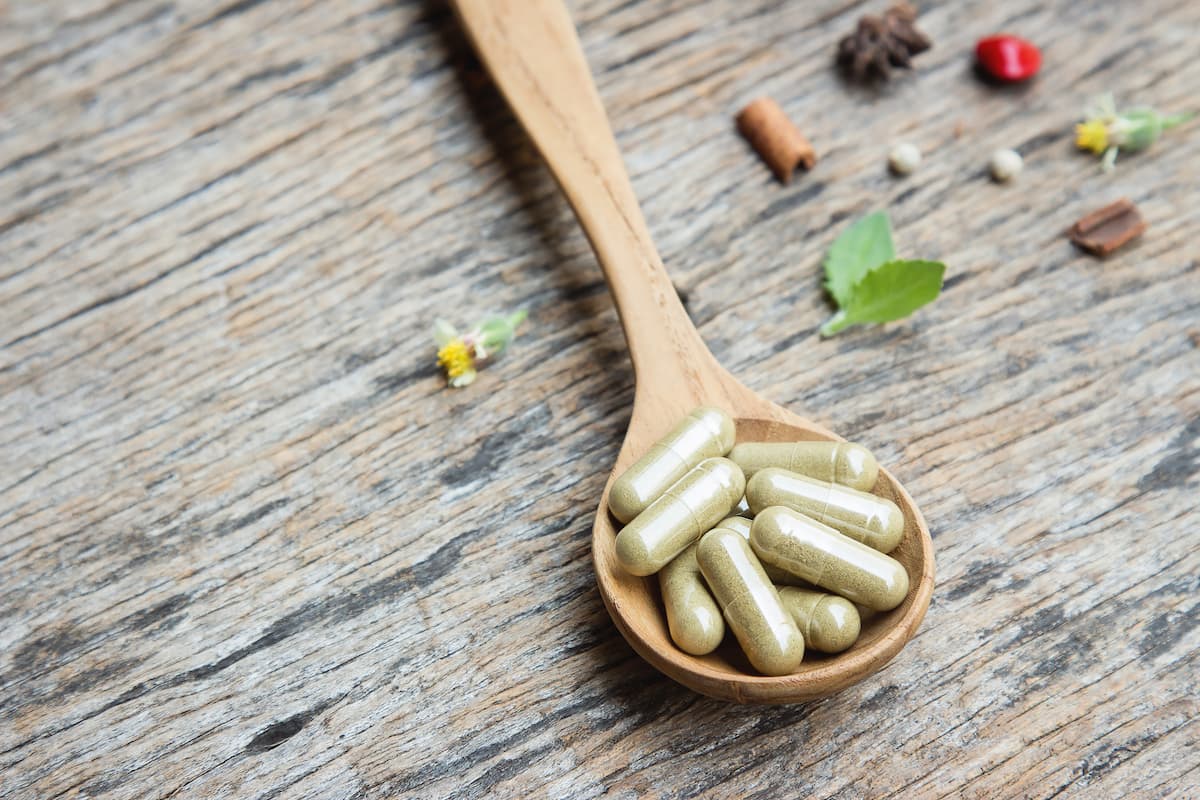
Ashwagandha affects thyroid hormone levels. Find out if you can use it.
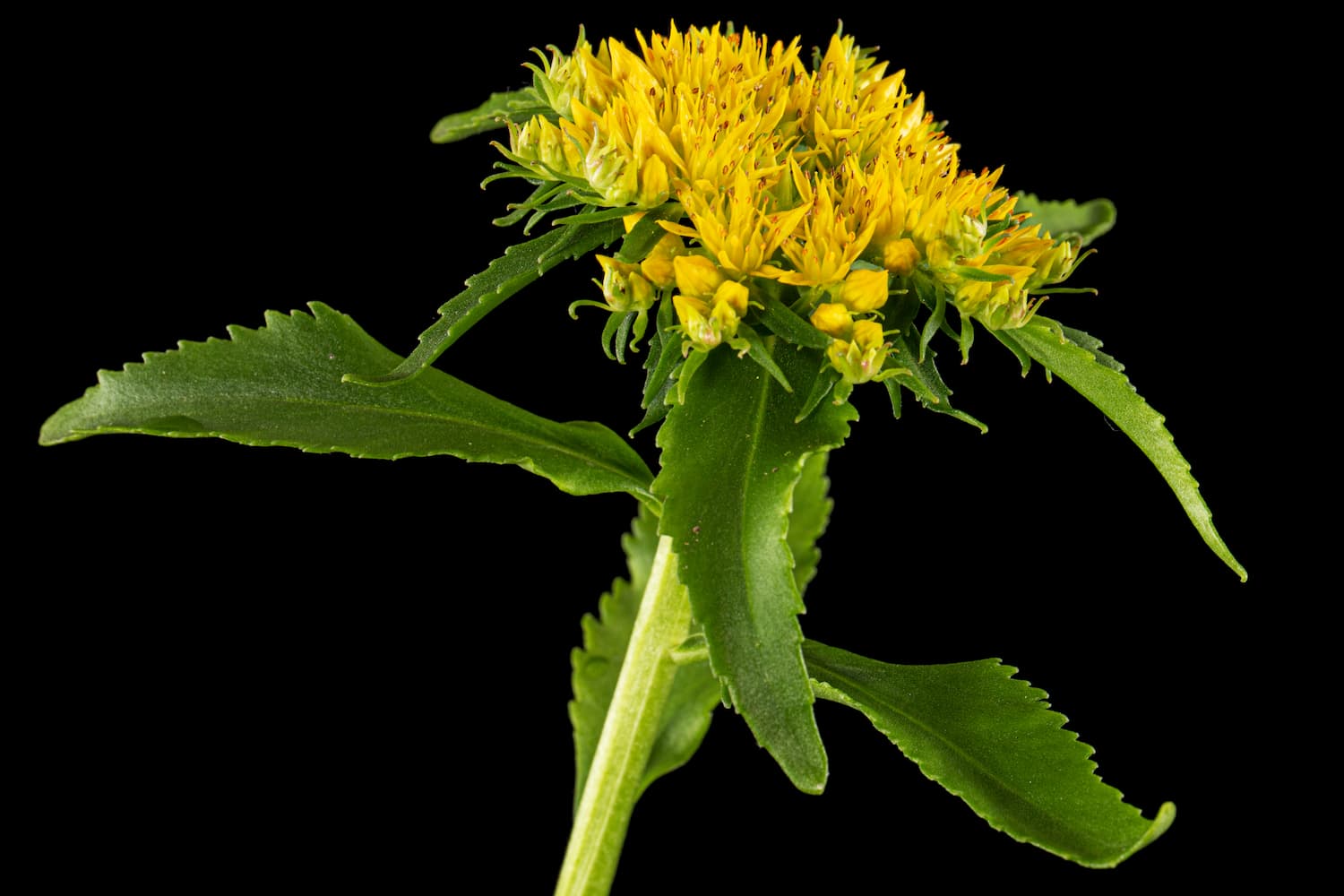
See how mountain pintail can affect your wellbeing.

Check out the opinions of doctors and other professionals about ashwagandha. Also find out what people on the forum think about it.
